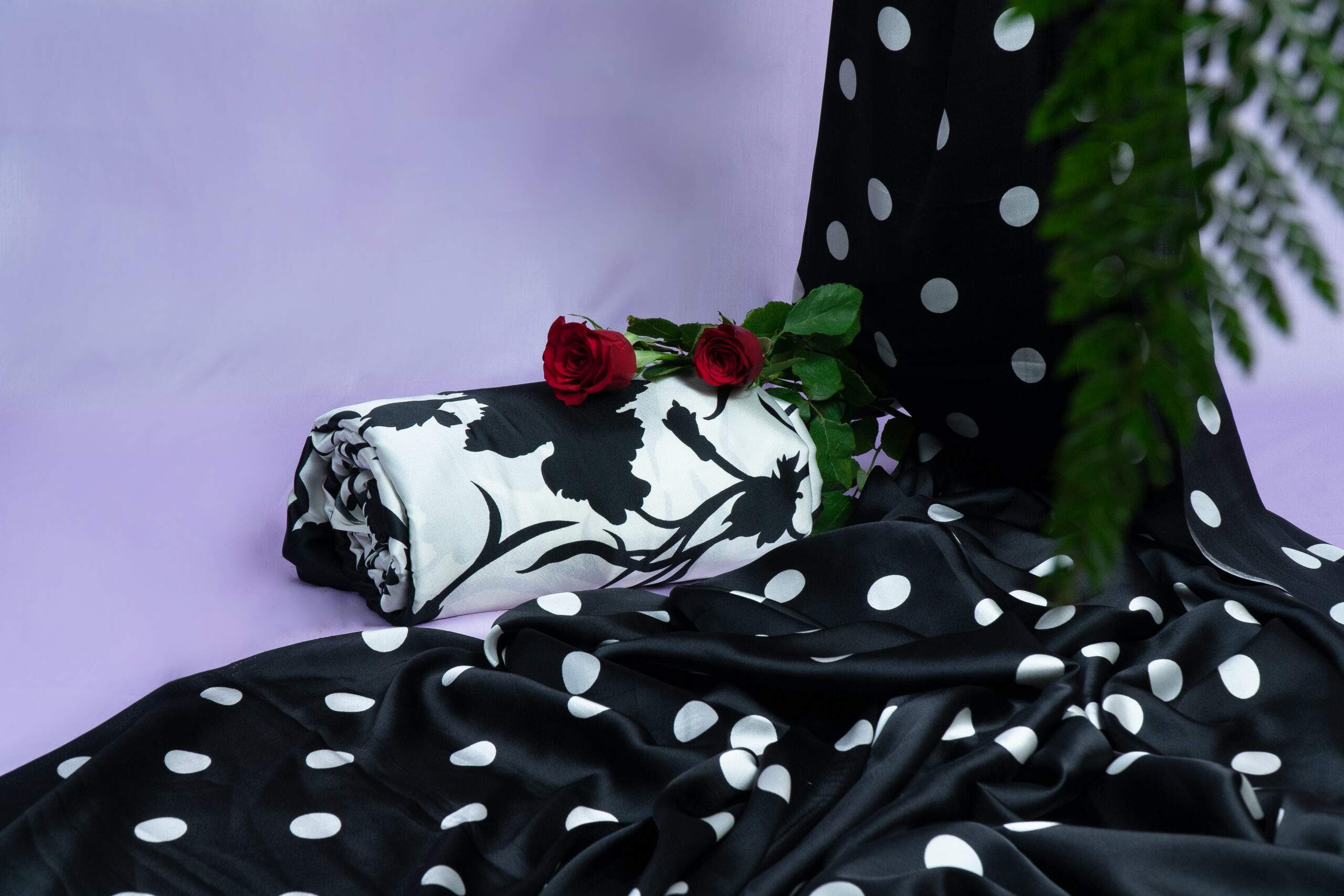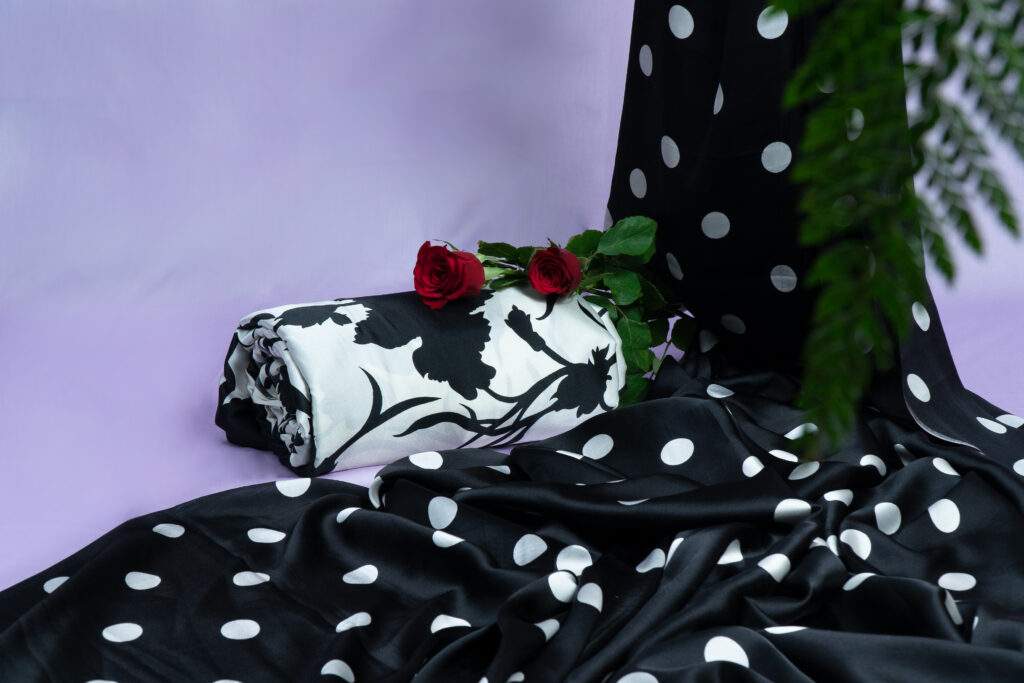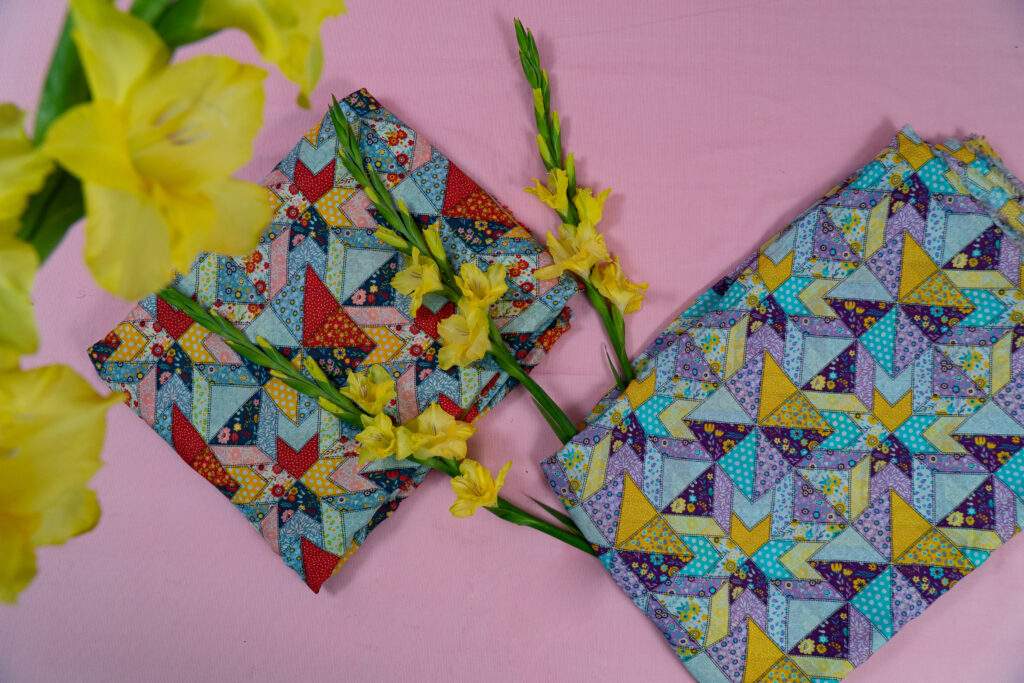
Satin fabric is a popular choice for many types of clothing, including nightgowns, wedding gowns, lingerie, blouses, boxer shorts, neckties, and shirts. This fabric is known for its soft and smooth feel against the skin. However, many people are unaware that satin is actually a type of weave, not just a type of fabric.

Satin weave is created by floating some warp yarns across the weft before it goes under a weft thread, and then repeating the cycle. This method of weaving creates a lustrous and smooth surface that is soft to the touch. Satin is typically made with shiny filament yarns that produce the lustrous finish we associate with the fabric. Alongside twill weave and plain weave, satin is one of the three basic fabric weaves that has been in existence since ancient times.
Satin weaving is a fabric weaving technique that is associated with a few interlaces of the warp yarns over the weft or with the weft thread predominating on the surface of the warp yarns. The warp yarns are held stationary in a loom, and the weft threads are woven over and under them. This type of weaving yields a smooth, lustrous, and soft surface.
Satin fabric is simply the fabric that is produced when using a satin weave. The terms “satin” and “satin weave” are often used interchangeably, but it’s important to note that satin is the fabric and satin weave is the process of weaving from which the fabric is made. The satin fabric produced with a satin weave has been associated with luxury, sensuousness, and classy romance, making it a popular choice for both men’s and women’s clothing.
What is the history of satin weave?
The history of print satin fabric can be traced back to medieval China, where it was first created in the port city of Quanzhou. From there, it spread throughout the Middle East, where it underwent further development and refinement.
The name “satin” is derived from the Arabic word for Quanzhou, which was known as “Zaitun” in the Arabic language. It wasn’t until the 12th century that satin was introduced to Italy, which became the first Western country to produce this luxurious fabric.
Over time, satin became a popular material in Europe, but it remained a luxury item that only the wealthy could afford. Meanwhile, in China, silk cultivation was widespread, and women used silk to weave satin fabric. As a result, satin was more accessible to peasants in China than it was to the upper class in the West.
What are the materials used to make satin weave?
Satin weave can be created using a variety of fibers, thanks to technological advancements in textile manufacturing. While silk was traditionally used to make satin, other materials like nylon, polyester, wool, and rayon can also be used to create this type of weave. This versatility in fiber selection allows for a wider range of options when it comes to creating satin fabric.
Traits that are typical of a satin weave?
Satin weave is a popular choice due to its smooth, lustrous finish and soft texture. Here are some of the characteristics of this weave:
1. Shiny front
The unique weaving technique of satin results in a shiny front surface and a dull back. This is due to the organization of the warp and weft threads.
2. Difficult to sew
The smoothness of satin can make it challenging to sew. Beginners should practice on smaller fabrics before working on larger projects.
3. Resistant to wrinkles
Satin is known for its ability to stretch out and maintain its shape without wrinkling, even with thicker fabrics.
4. Easily snags
Satin threads can easily snag, which can affect the fabric’s appearance.
5. Luxurious aesthetic
Satin has an air of high class and sophistication, making it a popular choice for clothing, bedding, and even home decor.
6. Versatile
Satin weave can be used to create a wide range of items, from ballet shoes to bridal gowns to underwear and even upholstery.
7. Durable
The tightly woven long fibers of satin make it a durable option that can withstand wear and tear over time. In fact, it can last for many years without showing visible signs of damage.
Different types of satin weave
Satin fabrics are made by weaving long, continuous fiber filaments. The quality of the fabric is determined by the length of the filaments used in its creation.
There are four main types of satin weaves
Four-harness satin weave
This type of weave has more elasticity and stretch than a plain weave. In this pattern, the weft thread passes over three warp yarns and under one, resulting in a ratio of 4:1 satin weave. By comparison, the ratio in a plain weave is 1;1
Five-harness satin weave
This type of weave is similar to the four-harness weave, but with the weft thread passing over four warp threads before going under one.
Eight-harness satin weave
This weave is more flexible than the previous weaves mentioned. In this pattern, the weft thread passes over seven warp threads before going under one.
Each of these weaves has its own unique properties and can be used to create a variety of satin fabrics with different finishes and textures.
Various varieties of satin?
There are approximately 9 different types of fabrics made using satin weave, including:
1. Antique Satin
This is a heavy fabric made from unevenly spun yarns used as weft threads. It is typically woven in the 8-harness or 5-harness satin weave style, and it is often used for curtains.
2. Baronet Satin
This is the most lustrous type of satin, which uses rayon warp threads and cotton weft threads. It comes in bright colors and is commonly used for decorative fabrics.
3. Charmeuse
This fabric has a luminous face with a full reverse. It is made using a hard twist warp yarn and a crepe weft yarn, making it lightweight. Charmeuse is often used in dressmaking.
4. Crepe-back
This is a reversible fabric that has a lustrous satin finish on one side and a visible crepe texture on the other. It is commonly used in dressmaking.
5. Duchess
This heavy fabric is mainly used for bridal wear. It has less luster than standard satin, and it is usually dyed in solid colors. It is stiff and used for formal wear.
6. Massaline
This lightweight fabric has a high luster and is made from silk or rayon. It is soft and mainly used for making dresses.
7. Panne
This fabric is made from silk and has a high luster due to the heated roller pressure during production. It is commonly used in dressmaking.
8. Poly Satin
This type of satin is woven from polyester thread and is mainly used in dressmaking.
9. Slipper Satin
This medium-weight fabric is tightly woven, has a matte surface, and a cotton reverse. It is commonly used for accessories.
What are some common applications or uses of the satin weave?
As previously mentioned, satin made from satin weave is a highly versatile fabric. Here are some of its common uses:
1. Bedding
With its smooth and soft finish, satin is used to make comfortable and luxurious bedding.
2. Clothing
Satin is a popular fabric in the fashion industry, often used for bridal wear, evening gowns, and even comfortable nightwear and underwear.
3. Accessories
Satin is also used to make feminine accessories such as clutches and handbags.
4. Footwear
Satin finds its way into footwear, such as the shoes worn by ballet dancers.
5. Upholstery
Satin has been used for decorative pieces of furniture since the 14th century in Europe, and is still used for pillow coverings and furniture today.
Is satin made from natural materials, synthetic materials, or a combination of both?
Satin is a fabric that is not made from a single natural raw material. It is woven from fibers such as silk, rayon, polyester, cotton, wool, and nylon.
Tips for maintaining and cleaning satin weave fabrics?
Taking care of satin weave fabrics greatly depends on the type. Satin made from synthetic fibers and cotton can be washed at home, while satin made from silk should be dry cleaned.
If you need to wash your satin at home, here are some guidelines to follow:
- Wash by hand with cold water and a mild detergent.
- Avoid wringing or hanging your satin after washing, as it may lose its shape.
- Do not machine dry your satin. Instead, lay it flat to air dry or on a towel to dry.
Satin weave fabrics vs. silk: what’s the difference?

Silk is a natural raw material that is obtained from silkworms. Satin, on the other hand, is a type of weave structure and not a material. While silk is commonly used to create satin fabric, satin only refers to the weaving technique, and silk can be used to create other types of weave patterns as well that are not satin.
Satin vs. sateen: what’s the difference?
Sateen is a fabric that is made using the satin weave technique, but from short-staple fibers instead of long filament fibers. While many people assume that satin and sateen are the same, this is not the case. Cotton is commonly used to produce sateen, and when cotton is woven using the same technique as satin, the resulting fabric is known as cotton sateen.
Conclusion
Satin weave is a complicated weaving method that is made from various types of fibers such as nylon, polyester, wool, and rayon. It is breathable, smooth, and has a soft feel against the skin, which is why it is commonly used to make underwear and other male and female apparel. This fabric has been around since ancient times and is likely to continue to be a highly sought-after fabric for many years to come.